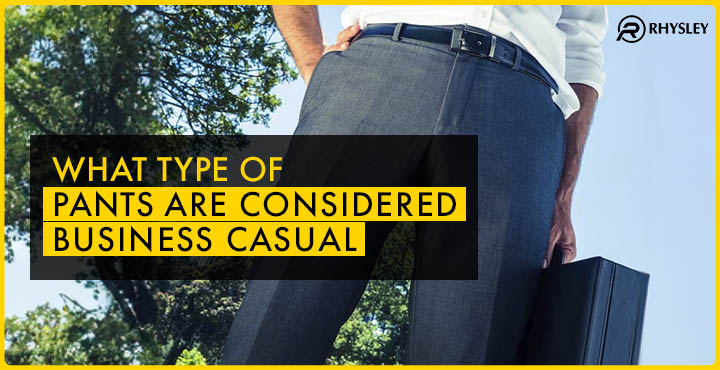
What type of pants are considered business casual?
In today’s evolving workplace, business casual remains a prevalent dress code that strikes the perfect balance between professionalism and comfort. While the term can sometimes feel ambiguous, understanding which pants are appropriate for business casual environments can help you build a versatile wardrobe that meets workplace expectations.
The Foundation: Classic Chinos
Chinos stand as the cornerstone of business casual pants. These cotton twill trousers offer a clean, polished appearance without the formality of dress pants. It is available in various weights and finishes, chinos provide year-round versatility.
Key features that make chinos business casual appropriate:
- Medium-weight cotton with a subtle texture.
- Flat front (though subtle pleats can be acceptable).
- Clean, tailored fit without excessive bagginess.
- Finished hem rather than frayed edges.
Colors like khaki, navy, olive, and gray provide the most versatility. While brighter colors can occasionally work, they’re better suited for more casual workplaces or warm-weather seasons.
Dress Pants: The Elevated Option
Wool or wool-blend dress pants occupy the formal end of the business casual spectrum. These pants work particularly well for client meetings or presentations when you need to project greater authority without wearing a full suit.
What distinguishes business casual dress pants:
- Lighter weight than suit pants.
- Often sold as separates rather than with matching jackets.
- Small patterns like herringbone or subtle checks.
- Refined materials like merino wool or tropical weight wool.
The key to keeping dress pants in business casual territory is pairing them with less formal tops and shoes—think button-downs without ties and loafers rather than oxford shoes.
Dark Wash Jeans: The Modern Addition
In many contemporary workplaces, dark wash jeans have earned their place in the business casual wardrobe. However, not all jeans qualify. For business casual settings, jeans should be:
- Dark indigo or black with minimal fading.
- Free from distressing, holes, or heavy abrasion.
- Straight or slim fit (not too tight or too loose).
- Full length with a clean hem.
Premium denim with less visible stitching and minimal details helps elevate jeans to business casual status. Save the light wash, distressed, or trendy styles for casual Fridays or after-work events.
Khakis: The American Classic
While sometimes used interchangeably with chinos, traditional khakis typically feature a heavier cotton fabric and a more relaxed cut. They represent a slightly more casual option but remain entirely appropriate for business casual environments, particularly in American workplaces.
Performance Fabrics: The Modern Upgrade
Modern textile innovations have introduced performance features to business casual pants, offering benefits like:
- Stretch for comfort and movement
- Moisture-wicking properties
- Wrinkle resistance
- Temperature regulation
These technical fabrics maintain a professional appearance while adding functional benefits, particularly valuable for those with active workdays or frequent business travel.
Read More: Types of t-shirts for men , different types of t-shirts for women
Fit and Styling Tips
The appropriate fit makes all the difference in business casual pants:
- Aim for a clean silhouette that skims the body without clinging.
- Pants should sit at or just below the natural waist.
- Length should break slightly at the shoe, avoiding pooling fabric.
- Consider a slight taper for a more contemporary look.
For maximum versatility, invest in neutral colors that can be paired with various shirts, sweaters, and jackets. Build your collection starting with navy, gray, and khaki before expanding to subtle patterns or less common colors.
The Bottom Line
Business casual pants serve as the foundation for a professional yet comfortable workplace wardrobe. By focusing on quality materials, proper fit, and appropriate styling, you can navigate the business casual dress code with confidence while maintaining your professional image.
Remember that workplace expectations vary across industries and regions—tech startups will have different standards than financial services firms. When in doubt, observe how leadership dresses and aim for a similar level of formality in your business casual pants selection.